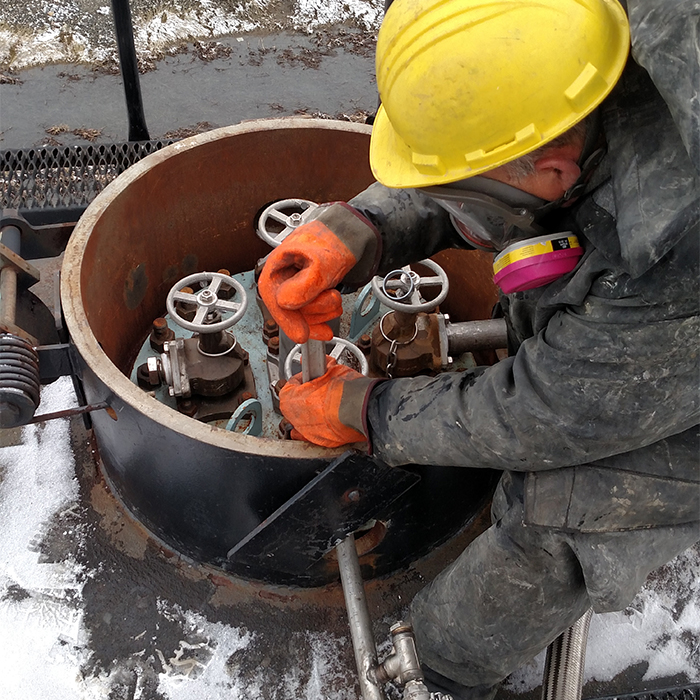6 Significant Changes That Have Resulted In Improvements To Hazmat Safety In The Rail Industry
The Railroad Industry’s Commitment to Safely Transporting Hazardous Materials
 Railroads play a critical role in transporting hazardous materials (hazmat) that are essential to modern life, from chemicals used to treat drinking water to those used in fertilizers and other industrial processes. While recent high-profile incidents have raised public concerns, the railroad industry, in fact, has a remarkably low accident rate compared to other modes of freight transport. According to the Association of American Railroads (AAR), over 99.99% of hazmat shipments reach their destination without incident.
Railroads play a critical role in transporting hazardous materials (hazmat) that are essential to modern life, from chemicals used to treat drinking water to those used in fertilizers and other industrial processes. While recent high-profile incidents have raised public concerns, the railroad industry, in fact, has a remarkably low accident rate compared to other modes of freight transport. According to the Association of American Railroads (AAR), over 99.99% of hazmat shipments reach their destination without incident.
That hasn’t stopped the continuous efforts to further improve upon this stellar track record. The railroad industry, along with related professional organizations and government regulatory bodies, have worked together to identify and mitigate potential causes of hazmat releases. In fact, between 1980 and 2017, railroads cut their hazmat accident rate by 91%[1].
Here are some of the significant changes that have resulted in improvements to hazmat safety:
Stringent Tank Car Standards: Thanks to advocacy from the AAR and railroads, several new federal regulations since 2015 require sturdier, safer tank cars for transporting flammable liquids like crude oil and ethanol[2]. Older, less crash-resistant tank cars are being phased out on an aggressive timeline.
Routing Analysis: Railroads use sophisticated software called the Rail Corridor Risk Management System (RCRMS) to identify the safest possible routes for hazmat shipments. RCRMS analyzes 27 different risk factors to minimize exposure for communities along the route[3].
Track & Equipment Inspections: Using track-side detectors, ground penetrating radar, ultrasound and other technologies, railroads inspect their infrastructure and equipment far more frequently than federal standards require[4]. This preemptive approach to maintenance prevents incidents before they happen.
First Responder Training: In partnership with the Federal Emergency Management Agency (FEMA), railroads operate the Security and Emergency Response Training Center (SERTC). To date, SERTC has trained over 56,000 first responders from all 50 states and Canada on safe hazmat response[5].
Information Sharing: AskRail, a mobile app developed by the AAR, provides first responders immediate, real-time access to information on the hazardous contents of any rail car at an incident site[6]. Over 35,000 first responders currently have access to AskRail.
New Technologies Coming On Line: Electronically controlled pneumatic (ECP) brakes, positive train control (PTC), and programs to identify and remove defective wheel components before they fail. New AI tools will help optimize safety-critical tasks such as traffic monitoring, predictive maintenance alerts, and determining the safest position for certain cars along the length of trains.
Salco Products, as a manufacturer of rail car equipment designed for the safe transportation of certain hazardous materials, is a proud partner and supporter of the industry’s ongoing efforts to minimize negative environmental impacts resulting from freight rail traffic.
[2] https://www.aar.org/campaigns/tank-car-committee/
[3] https://www.aar.org/wp-content/uploads/2018/07/AAR-Hazmat-transportation-by-rail.pdf
[4] https://www.aar.org/wp-content/uploads/2018/07/AAR-Infrastucture-Investments.pdf
[5] https://www.aar.org/campaigns/hazmat-training/
[6] https://www.aar.org/wp-content/uploads/2020/07/AAR-AskRail.pdf

